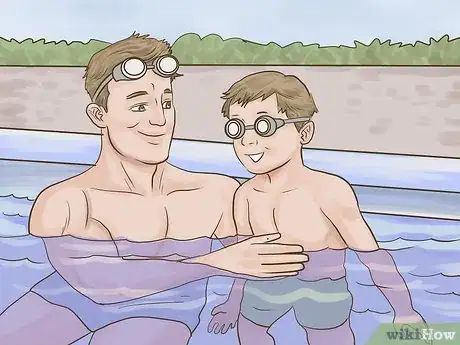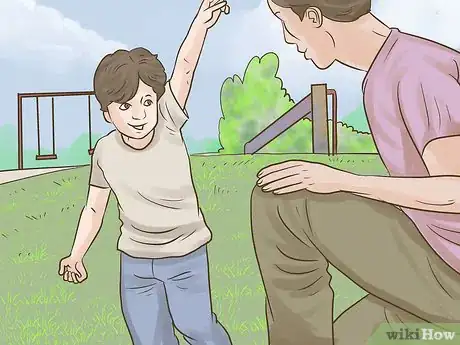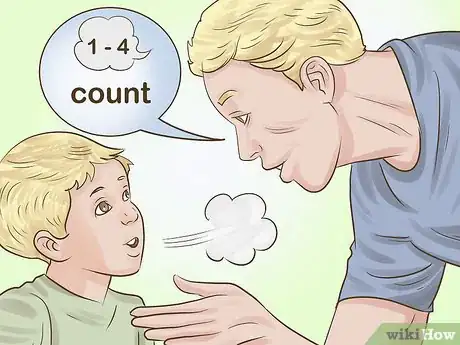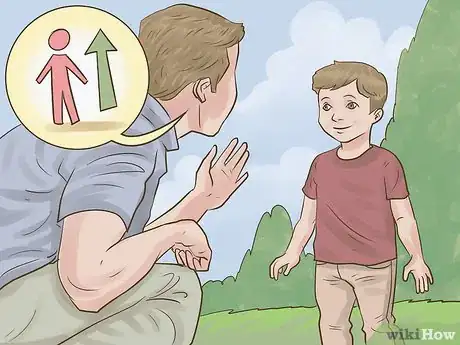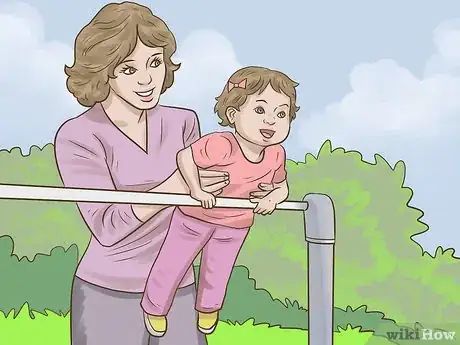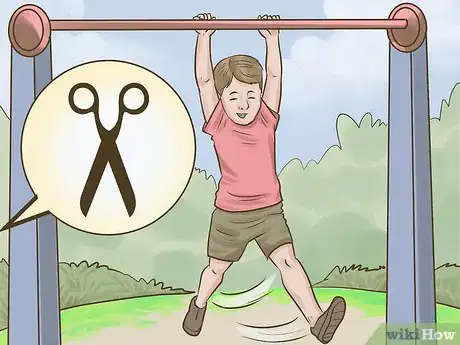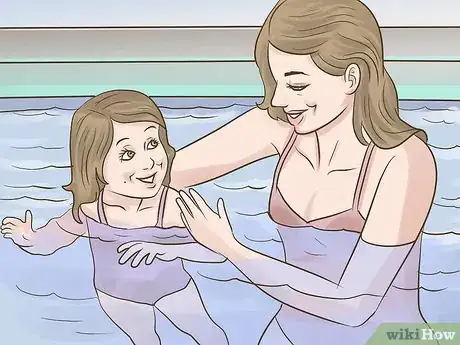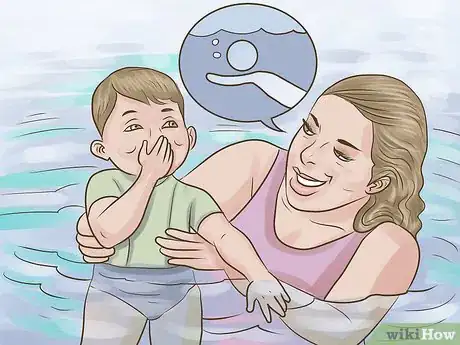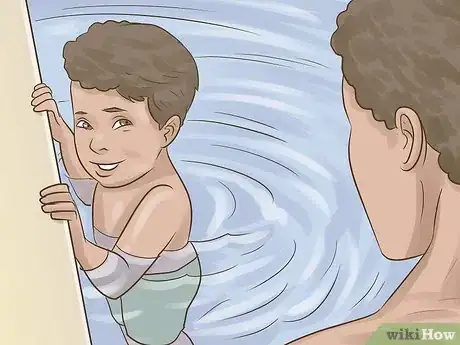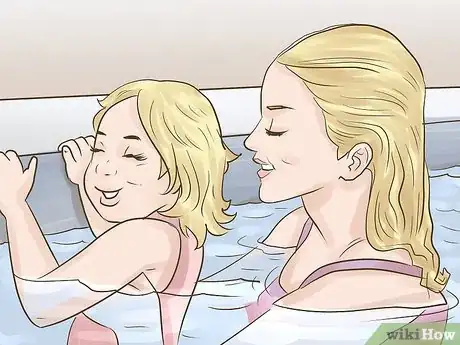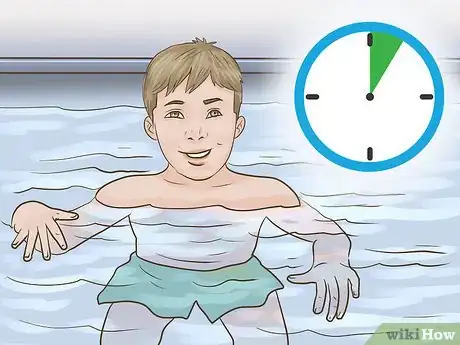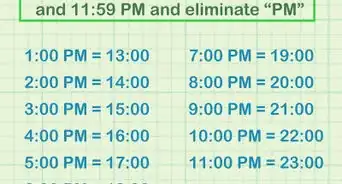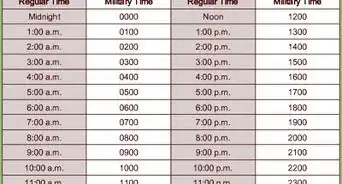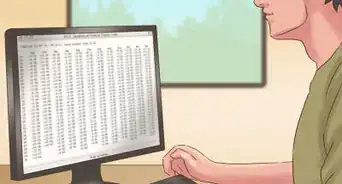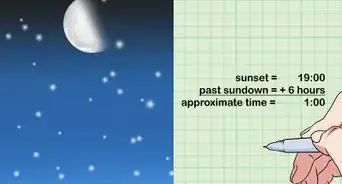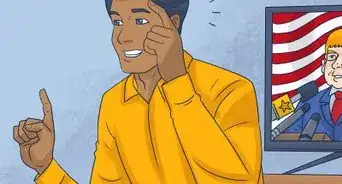X
This article was co-authored by Alan Fang. Alan Fang swam competitively for over 7 years, through high school and into college. He specialized in breaststroke events, and participated in events such as the Speedo Championship Series, the IHSA (Illinois High School Association) state championships, and Illinois Senior and Age Group state championships.
This article has been viewed 23,170 times.
Learning to tread water is an important skill for kids to master, and fortunately most children can get a good handle on it at a young age. To teach your child how to tread water, start with some basic guidelines, teach them arm and leg movements on land, and work your way up to practicing in the water.
Steps
Part 1
Part 1 of 3:
Starting With Basics
-
1Start early.[1] Kids should be taught to tread water before they are taught how to swim. Try to teach water treading as soon as your child is capable of following directions and copying the example you set for them. For most kids, this is usually around 2-5 years old.[2]
- Since younger kids are more prone to accidental drowning, teaching this skill helps to keep them safe.
-
2Practice on dry land. Rather than jumping right in and treading water, it is better to safely work on land. Start by the different parts of the body (first the arms and then the legs). An ideal place to practice these movements is at a playground.[3]Advertisement
-
3Try some slow breathing exercises. Start by simply breathing with your child. Instruct them to try breathing in for a count of four, and out to a count of four. In time, ask them to try increasing the number to five or six. Maintaining a slow, steady flow of breath helps your child to stay calm and tread water effectively.[4]
-
4Stay in a vertical position. Make sure your child knows that in order to tread water, they must be in a vertical position with their head above the water. As your child works on breathing and arm movement exercises, make sure they remain upright.[5]
- If your child is not in a vertical position with their head out of the water, they are technically swimming.
- While it is important to teach your child to swim, the ability to tread water should come first.
Advertisement
Part 2
Part 2 of 3:
Practicing Arm and Leg Movements
-
1Emphasize a front-to-back arm motion. Your child’s arms should be held out in front of them, then moved slowly backward. Ask your child to repeat this motion (front to back, back to front) the whole time. Demonstrate this movement, and encourage your child to try.[6]
- It may feel more natural to your child to move their arms up and down, but this is not an effective way to tread water and will tire them out quickly.
- Try pretending you and your child are in the jungle, using your arms to part the vines.
-
2Pay attention to your child’s palms. The palms of your child’s hands should be facing in the direction their arms are moving. When their arms go as far as they can comfortably go toward your kid’s back, they should rotate their hands so that the palms face forward while moving their arms toward the front.[7]
- Ask them to pretend they are parting grass or vines and pushing them to the sides so they can get through.
- These motions should be done slowly and evenly to conserve energy.
-
3Get your child into a position with their feet off the ground. Once your kid has mastered the proper arm motions, you can move on to teaching the proper leg motions. Although breathing and arm-only exercises can be practiced standing up, in order to do leg exercises your child will need to sit, lie down, or try other positions.[8]
- Practicing at a playground is ideal because your kid can be helped into a position where their feet are not on the ground.
- You can help your kid hang from a horizontal bar or suspended rings on the climbing tower.
- To demonstrate these motions, suspend your own body off the ground.
- You may need to maneuver your child’s legs for them until they can do the motions on their own.
-
4Try a scissor kick. One of the easier leg motions to learn is known as the "scissor kick." To do this, ask your child to move their legs apart (one toward the front and one toward the back) then reverses them. Demonstrate this move for your child. Then ask them to pretend their legs are scissors cutting through a piece of paper.[9]
-
5Do a frog kick. The "frog kick" is a move where your child will bend both legs, with the knees pointed outward. Then they will extend both legs at the same time. Demonstrate this for your child, then ask them to pretend like they are a jumping frog.[10]
-
6Work up to the eggbeater. The most efficient leg motion for treading water is called "the rotary" or "eggbeater." Unfortunately, this move can be difficult. For this one, one of child’s legs will make slow clockwise circular motions, while the other leg makes slow counterclockwise motions. Demonstrate this for your kid, then ask them to imagine they are mixing eggs with each foot. Have them try to do each leg independently, and work up to doing both at the same time.[11]
Advertisement
Part 3
Part 3 of 3:
Practicing in Water
-
1Let your kid practice treading water in a pool. After your child has learned the arm and leg motions, the lessons should be continued in water. A pool works well for this because it is much safer than using the ocean or a lake.[12]
- The pool needs to be deep enough that your child cannot touch the bottom with their feet.
-
2Get into the water with your child. For safety reasons, you should stay in the water near your child throughout the lessons in the water. If your kid has never been in a pool, take extra time to help your kid get used to it.[13]
-
3Practice going under water. Although the purpose of treading water is not to go under, you want your child to be comfortable submerging. This will make them more comfortable and capable when treading water. Ask your kid to hold their breath (and pinch their nose closed) as you gently pull them under water and immediately bring them back up. Practice this multiple times until they can go under on their own.[14]
-
4Start the lesson near the edge of the pool. Start the lesson at the edge of the pool so that your kid has the added security of holding onto the wall. Ask the to begin by doing just leg motions. Then advance to them holding the wall with only one hand, and doing leg motions plus arm motions with their free arm. Once your child manages to tread water while holding the wall, encourage them to release their hold on the wall.[15]
- It can be very helpful for you to get into the pool and demonstrate these actions for your child.
-
5Provide some extra support. If your kid is worried about leaving the security of the wall, offer to support them at the waist as long as it can be done without interfering with your kid’s arm and leg movements. This exercise is meant to make them safer and more comfortable around the water, not create additional fear. Avoid pushing them to anything they are not comfortable with.[16]
- You child can also wear some type of flotation device such as armband floaties, an inflatable loop around their waist, or a life vest, that keeps your kid’s head above the water and does not interfere with the movement of their arms and legs.
- When you and your child feel comfortable, your kid should tread water without any support from you or flotation devices.
-
6Extend the length of time your child is treading. It is a good idea to work on extending the amount of time that your child can tread water while practicing in the pool. Not only will this work on their efficiency, but it will also improve their endurance.
- Depending on the abilities of your kid, you might start at just two to five minutes of unsupported water treading.
- Gradually increase it by increments of ten minutes at each practice session.
Advertisement
Community Q&A
-
QuestionCan I teach my kid to tread water when I don't have the ability to swim?
 Community AnswerTry hiring a swimming teacher. The swimming teacher will not only help with treading water, but with learning how to do things like different strokes and techniques.
Community AnswerTry hiring a swimming teacher. The swimming teacher will not only help with treading water, but with learning how to do things like different strokes and techniques.
Advertisement
References
- ↑ Alan Fang. Former Competitive Swimmer. Expert Interview. 10 January 2019.
- ↑ http://pix11.com/2014/05/22/life-saving-pool-skills-to-teach-kids-before-summer/
- ↑ https://cosmolearning.org/video-lectures/how-to-teach-a-child-to-tread-water/
- ↑ https://cosmolearning.org/video-lectures/how-to-teach-a-child-to-tread-water/
- ↑ http://www.enjoy-swimming.com/how-to-tread-water.html
- ↑ http://www.enjoy-swimming.com/how-to-tread-water.html
- ↑ http://www.enjoy-swimming.com/how-to-tread-water.html
- ↑ https://cosmolearning.org/video-lectures/how-to-teach-a-child-to-tread-water/
- ↑ https://cosmolearning.org/video-lectures/how-to-teach-a-child-to-tread-water/
- ↑ https://cosmolearning.org/video-lectures/how-to-teach-a-child-to-tread-water/
- ↑ https://www.youtube.com/watch?v=rQlFBevRTB4
- ↑ https://www.youtube.com/watch?v=rQlFBevRTB4
- ↑ https://www.youtube.com/watch?v=rQlFBevRTB4
- ↑ http://pix11.com/2014/05/22/life-saving-pool-skills-to-teach-kids-before-summer/
- ↑ http://pix11.com/2014/05/22/life-saving-pool-skills-to-teach-kids-before-summer/
- ↑ http://pix11.com/2014/05/22/life-saving-pool-skills-to-teach-kids-before-summer/
- ↑ http://teachyourkidstoswim.com/blog/2011/03/01/why-teaching-your-kids-to-tread-water-matters-more-than-teaching-them-to-float/
About This Article
Advertisement
